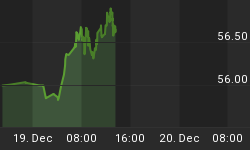Let's look into next year and discuss what the Fed will be facing.
1. The Fed is still working at keeping interest rates low, but making "noises" about possibly increasing them in order to calm down those that are worried about all the inflationary money that was printed. During the recent short term, the Fed has been interested in low interest rates, while the market is wanting higher rates in payment for higher perceived risks.
Some of that perceived risks may be about commercial real estate loans. Even with a 10% increase in property values, about one third of commercial real estate loans would be under water the next two to three years. So ... the Fed has a problem: If they increase rates will the "commercial under-water percentage" end up higher? If the Fed doesn't handle this problem correctly, investor and bank losses could be at least two trillion dollars and that would be disastrous to the banks and our economy. The point is ... as rosy as the government is making things appear, risk levels down the road are still a potentially serious problem, and the Fed will face a new problem if they raise interest rates.
2. Let's talk about another issue ... Many are squawking that banks are not lending enough to feed the economy. Others say that banks can't find good candidates too lend to, so they shouldn't lend.
The reality of the problem centers around deleveraging. At the height of the recent insanity, some banks and Wall Street firms were leveraged as much as 50x. Since then, they have been in a deleveraging process to get down to 20x ... they are not there yet and the journey is continuing. It won't be until after they finish redeploying cash towards de-levering will they be in a position to put a serious amount of money back into satisfying business and consumer needs.
3. There is a recent government, anti-foreclosure program Report that said: "Approximately one-third of all mortgage holders have a loan balance that's higher than the current value of their home." In other words, they are "under water" on their loan.
That is not true. The Report's study failed to take into account how much borrowers had paid down on their loans, and how much of their equity line they used (if any). When the calculation was done that way, CoreLogic Corp. said the real number is closer to 23% ... not the 33.8% the government reported.
So, that's a real plus ... things are less negative. That statement sounds like "government or media spin" doesn't it?
Let's move past the spin and talk about the real issue here ...
If 23% of homeowners are upside down on their mortgage, then they can't tap equity to get cash and make new purchases spurring the economy forward. But you say, that leaves 77% that can probably spend and move the economy forward.
The Fed thinks ... MAYBE.
Why only maybe? Because of the massive number of mortgage resets coming up.
Remember when Greenspan was touting that everyone should go for "variable rate mortgages"? Well, those haven't been unwound yet ... but, they won't be a problem unless the Fed decides to RAISE interest rates.
If you are wondering what the mortgage reset picture looks like, here is a chart from Credit Suisse: (The number of Mortgage resets will rise until the end of 2011.)

So, what does this mean?
Mortgage resets need to see low interest rates to stay low. If interest rates zoom up, the resets could be done at rates that severely hurt consumer spending and the economy.
So, the Fed has a big problem. They can't raise rates now, and kill consumer spending in late 2010 and late 2011. Higher reset rates would also mean that we would see an increase in the 23% that are currently under water on their mortgages. And ... if the Fed doesn't raise rates now, inflation could become a serious problem. So, maybe next year will be about which of the two lesser evils the Fed will opt for.















